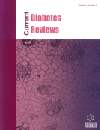
Full text loading...
We use cookies to track usage and preferences.I Understand
The utilization of nanotechnology-based herbal medication delivery systems is gaining attention as a novel approach to treating diabetes mellitus. The incorporation of nanotechnology into herbal medicine provides benefits such as enhanced Stability, solubility, and bioavailability of herbal medications. The purpose of this paper is to summarise the present status of research on herbal medicine delivery systems based on nanotechnology for the treatment of diabetic patients. The paper evaluates the various nanocarriers and herbal drugs used, the challenges and opportunities in the development of these systems, and their potential efficacy and safety. Additionally, the paper highlights the need for further research to optimize the formulation and delivery of these systems. This review's overarching objective is to provide a complete understanding of the possibilities of herbal medication delivery systems based on nanotechnology in diabetes mellitus treatment.

Article metrics loading...

Full text loading...
References


Data & Media loading...

